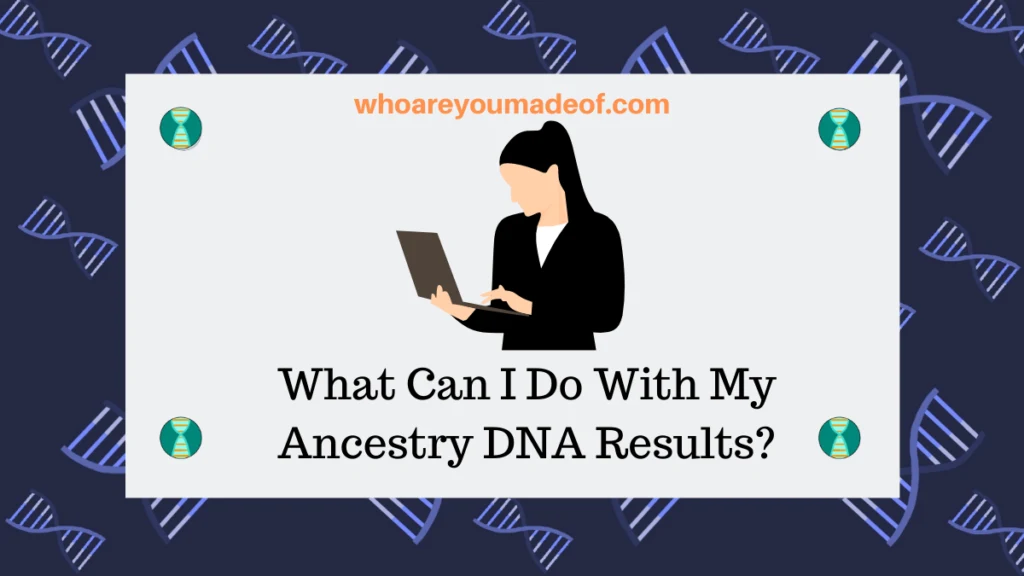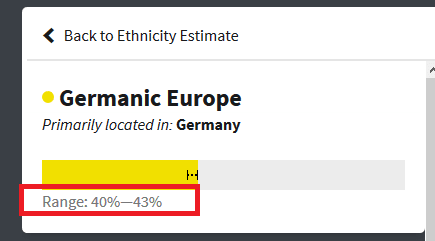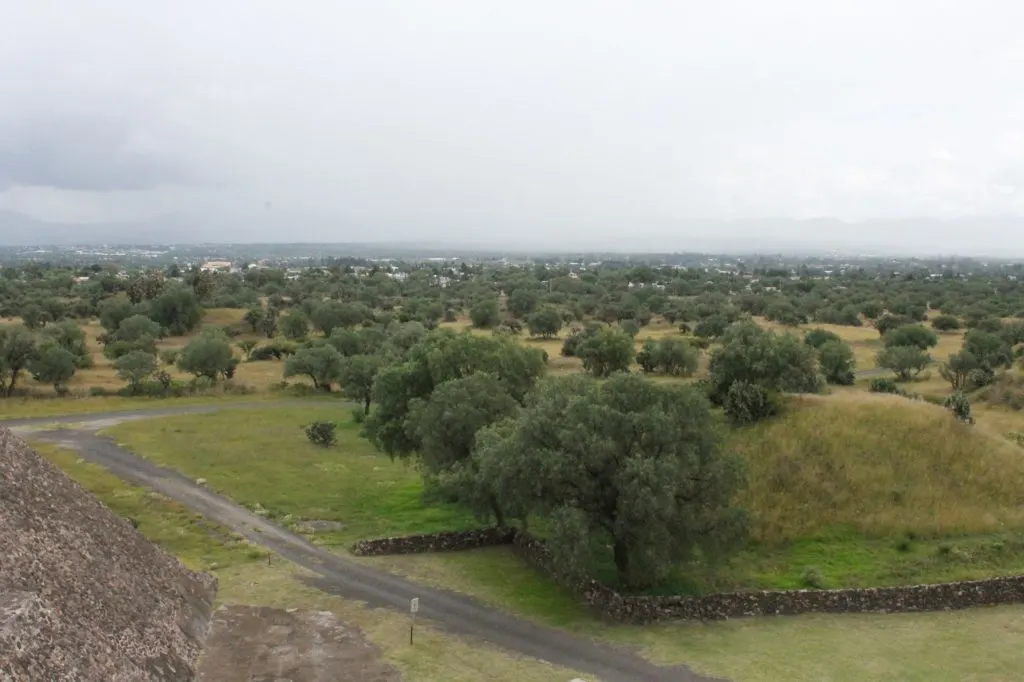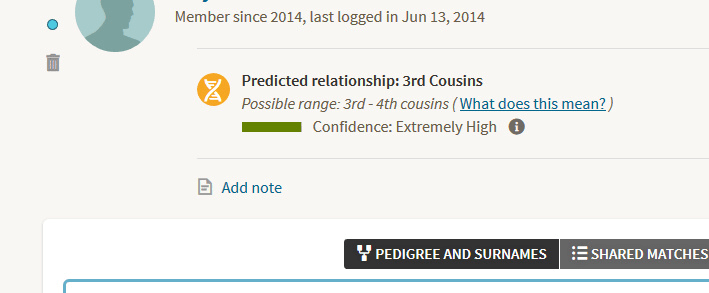The day that you have been waiting for for weeks has come and gone. You got the exciting e-mail containing the news that your DNA results are ready. You looked at them, and it was all well and good. What should you do now?
No worries! In this post, I'll show you many things you can do with your DNA results. They range from the serious to the fun!

I like to look at these autosomal DNA test (a fancy word to describe the type of DNA tests that testing companies such as Ancestry DNA and 23andMe offer) as a gift that keeps on giving. There is so much that you can do with your DNA results, and you might actually have a great time exploring everything your DNA has to offer.
You haven't tested your DNA yet? Learn about my Ultimate DNA Testing Strategy.
Explore Your Ethnicities
If you got your Ancestry DNA results and you only looked at the basic ethnicity results, you might be interested to know that you can actually click through to your main DNA Story Page and learn much more about your ethnicity than is shown on the main page.
Here, you can explore your Genetic Communities, look at maps, migration routes, and your trace ethnicities.
Your ethnicity estimate is considered to be a "snapshot" of the DNA that you inherited from your ancestors - the key word being what you "inherited". We can't see any information about the DNA that you did not inherit.
You only received 50% of the DNA of each of your parents, and they only inherited 50% of their parents' DNA, and so on and so forth.
Each generation, there is some DNA that is lost (or "washed out"), for lack of a better term. Since you can't share DNA with all of your ancestors, the result is that you ethnicity results will not be a complete picture of your family's entire ancestry.
Even with all of its flaws, ethnicity estimates can be very helpful for helping you figure out if there might be something surprising in your family history that invites more investigation.
These DNA ethnicity results are only estimates, so you should definitely click on each of your ethnicities to give the "range" that it could actually be.

I wrote a post that explains a little more about how the testing companies calculate your ethnicity estimate, to learn more.
Pro tip: Click on "Show More Regions" and then "Show All Regions" to see all of the regions that your DNA has been compared to. Then, click on each individual region to see the "range" of DNA that you might share with people who live in that area of the world. This could give you some valuable clues as to trace ethnicities that you didn't know you had.
Build a Family Tree
Now that you know your genetic ancestry, aren't you interested in finding out which ancestors contributed which ethnicity? Building a family tree is a great way to get started down that path, and you never know what you'll find!
I love building my family trees on Ancestry. They are easy to share with others, have simple privacy settings, you have access to millions of records you can't find anywhere else, and you can even connect your DNA results to your tree for extra functionality.
You don't need a subscription to build a tree, but it is helpful to have one if you want to actively add records to your tree, and view the trees of your DNA matches.
We all have 4 grandparents, 8 great-grandparents, 16 great-great-grandparents, 32 great-great-great grandparents, and 64 great-great-great-great grandparents.
Wouldn't it be great to know where they all were born, and what kind of lives they lived? You can find an incredible treasure of information online now, so what's stopping you from finding out your family's story?

Pro tip: Creating a family tree on Ancestry and attaching your DNA to the tree gives you extra functionality in your DNA results. It will allow you to be placed in DNA circles and show you Shared Ancestor hints. Very cool!
Upload Your Raw DNA to Gedmatch
Gedmatch is a very neat website where you can upload your raw DNA data. The site has great tools that you can use to further analyze your DNA, and you can also find new DNA matches.
I've written a post about it, if you are interested in learning a little more about what Gedmatch is. I would like to write more about it if there is interest.
You can find tons of great information on Gedmatch using the following tools:
- One-to-Many (Find new DNA matches)
- One-to-One (Examine how you are related to a particular match)
- Admixture (alternative calculators for ethnicity)
- Search for people who have family trees AND match your DNA
- Find people whose DNA matches both your and another person
- Find out if your parents might be distantly related
Check it out! You never know what you might learn, or who you might help in their family tree journey.
Go Through Your DNA Matches One-By-One
This is my absolute favorite thing to do with my DNA results, and I highly recommend that you spend the time to go at least go through the first few pages of your match list. Pace yourself - it isn't a marathon. I will just do 1-2 each week, usually.
Why should you go through your DNA list? Depending on who you find, and how often you check, you might:
- Find new close relatives, like aunts/uncles/siblings/first cousins that you didn't know that you had (true story: this happened to me!)
- Find "long lost" cousins that aren't in touch with your family because of past tragedies or family grudges (I also experienced this)
- Come in contact with people who have possession of family bibles, photographs, and other documents that you might not otherwise ever know about or see.
- Learn who the parents or siblings of your ancestors were since your DNA matches might have better family trees than you, or a better-researched line, or more "inside knowledge" about a situation
Here's what I do:
- Click on their match page (where it brings up their ethnicity estimate and family tree)
- See if you have any surnames in common, or if you recognize a common ancestor
- Check to see if you have any shared matches, and if you have the time, check them out, too
- Make a note on the match page about how you think you might be related
Not everyone has noticed the place where you can add the note about a match on Ancestry DNA, so here is a screenshot of the location:

And this leads me to my next suggestion:
Contact Your DNA Relatives
There are a few reasons that I was initially hesitant to contact my DNA matches. First, I am fairly introverted and I find myself avoiding strangers. (Are my DNA matches strangers??)
Second, many of my matches don't have a family tree posted, so I found myself wondering if there was any point in trying to ask them about their family.
It turns out that my hesitation was completely unnecessary. Everyone that I have contacted has been very nice to me, and many people have been helpful.
So, here are the reasons that you should contact your DNA matches:
- They might have a family tree that they haven't posted on the website, OR they might have information and photographs that they haven't posted, and they might be willing to share with you.
- You might be able to share information that you have with them.
- They might be nice people and might live in your area, or you might visit them next time you travel.
- They might be adopted, and know nothing about their family and YOU might be the first biologically related person to have contact with them.
- You might find a family tree research partner, via someone who also has a vested interest in learning as much about your family as possible.
Contacting your matches and learning as much as you can from them is a great way to meet new relatives, but it's also a fantastic way to piece together a complete family story. How neat is that?
Pro Tip: Don't send generalized form letters, or send the same letter to each of your matches. Try to find out as much as you can about how you are related to your match and offer them some piece of information that you think might be interesting to them. That's the best way to get a friendly response.
Upload Your DNA to FTDNA
FTDNA is an abbreviation used for Family Tree DNA, one of the "big three" DNA testing companies. They have a substantial DNA database, and their testing services are popular outside of the U.S.
It is completely FREE to upload your DNA to their website, and you will have access to your DNA matches. If you want to get contact information for your matches, or access more in-depth tools to help you analyze your DNA, you can pay a $19 fee.
It is a very cheap or inexpensive way to get more for your money with Ancestry DNA or 23andMe test results.
Are you trying to decide between Ancestry DNA and FTDNA? I wrote a little post about that here.
Pro Tip: Upload your DNA for free, and then check out your results before you decide if you want to spend the $19.
Upload Your DNA to MyHeritage
Definitely consider uploading your DNA to My Heritage to get DNA matches for free. You will get a long list of DNA matches that are not available on other websites.
Additionally, you'll have access to segment triangulation, a chromosome browser, and lots of information about your matches.
This is becoming one of my favorite websites for exploring my family's roots. I have found that they have a high number of international DNA testers, which is great for a family like mine - half of my great-grandparents were the children of immigrants.
I have tons of cousins around the world and I am glad to be able to connect with them. If you don't have an international twist on your family tree, you'll have good luck at My Heritage, too.
Compare Your DNA to Ancient DNA Specimens
If you've already uploaded your DNA to Gedmatch, you can actually use the one-to-one tool to see exactly how much DNA you share with famous ancient DNA samples.
Take, for example, the 12,000 Native American boys that were found at the Clovis excavation site - the first ancient Native American DNA to be completely sequenced. You can use the tool on Gedmatch to compare your DNA with this sample as if it were a modern-day sample.
There are dozens of ancient samples on the site, and you can find out the kit numbers by using the Archaic DNA Matches tool and then run the One-to-One tool.
Conclusion
I hope that this list has given you some ideas about what you can do with your DNA results. It's a very fun hobby, and you can really learn a lot - both about the past and present.
Don't forget that more and more people are doing DNA tests every day, so remember to check back with your testing company every once in a while to see if you have new DNA matches, or if they have updated a feature that can provide you with more information.
Are you enjoying your test results? Have you discovered anything interesting or new? I'd love to hear from you in the comments!

Liz Davenport
Sunday 20th of February 2022
Hello! Such an interesting article. Regarding ethnicity estimates on Ancestry, I did not see the options of clicking on “Show More Regions” and then “Show All Regions." Rather, when I clicked on my DNA Story page just now, in addition to my ethnic regions, the option/link offered is "See other regions tested." When I clicked on that, an "AncestryDNA Regions List" popped up, grouped by continent, then by country/region when one clicks on the continent name. However, there is also a comment included with this feature: "You are linked only to the regions that appear in your estimate," which apparently means that I will not find any trace ancestries, no matter how many continents/countries I click on, beyond what is shown in my ethnicity estimate. The feature you described in your article must have been modified/changed since the time the article was published (?). Actually, I have seen Ancestry's breakdowns of ancestral regions in some ways seem to get less and less granular. I have been with Ancestry, FTDNA, 23andMe, Gedmatch, etc. from the very beginning, and while Ancestry results have lost such small trace elements that it once had (such as 1% European Jewish, <2% Iberian Peninsula, 1% Finland and Northwest Russia, etc.) and now include only large amounts of Ancestry (except for my newly shown 3% Norway, which is great :-)). By contrast, FTDNA now shows, in its Chromosome Painter, a small amount of South Caucasus and Sardinian and even a tiny drop of West Central Asian. (23andMe is another one that gives then takes away trace ancestries.) So, I was wondering whether you have any insights as to why Ancestry has changed things to where I cannot find anything more, within their 1500+ regions, than the most basic ethnicity estimates assigned to me. Hope that makes sense!! :-)
Alberto
Thursday 5th of November 2020
Another option to consider is to upload your RAW dna to ADNTRO. I have already done it and really worth it!